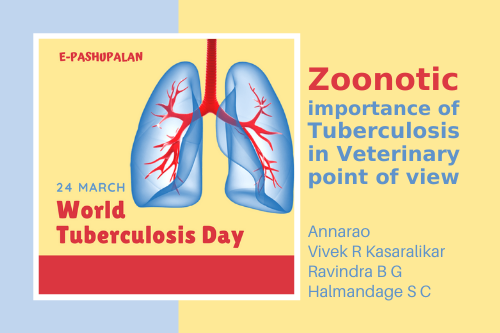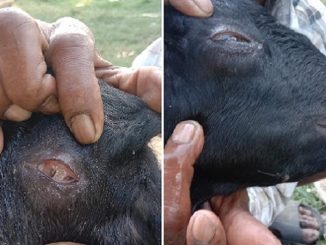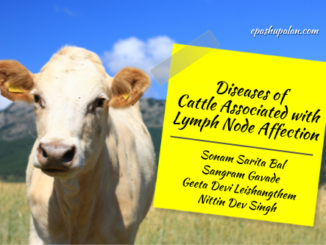World Tuberculosis Day– ‘’The Clock Is Ticking’’
Every year, 24th March is celebrated as World Tuberculosis Day by World Health Organization. The main aim of this celebration to create an awareness about the deadly disease Tuberculosis. It is one of the old disease of mankind and animals. Tuberculosis causing bacteria that is Mycobacterium tuberculosis was discovered by Robert Koch on 24th March, hence this day celebrate as Tuberculosis day and this year Theme of World Tuberculosis Day is “THE CLOCK IS TICKING” conveys message that world is running short of time to act on the commitments to end Tuberculosis made by global leaders due to Corona and many other global issues. It’s time to act on tuberculosis and end the tuberculosis by 2035. Globally every day 4,000 people death occurs due to Tuberculosis and 27000 people gets infection. Tuberculosis is one of the deadly disease in India causing 2,20,000 deaths every year. 24 Lakhs of tuberculosis cases were recorded in India in 2019 and death rate was nearly 4,50,000, that is 1,000 Tuberculosis deaths every day occurs in our country. India accounts for more than 25% of global tuberculosis incidence. These are all above facts and figures indicates the importance of disease tuberculosis in India.

Tuberculosis is caused by acid fast staining, intracellular Gram positive bacteria, Mycobacterium tuberculosis causes tuberculosis in humans, Mycobacterium bovis causes tuberculosis in bovines, Mycobacterium avium causes tuberculosis in domestic birds. One health approach is very much important for the control of tuberculosis The importance of role of animals and it’s control measures are discussed in this article. Mycobacterium bovis is isolated from human and Mycobacterium tuberculosis from cattle. So the disease is having zoonotic importance.
Tuberculosis in animals
Poor sanitation, contaminated feed and water, improper disposal of dung and urine, over-crowding, poor housing, farm hygiene, health care, ventilation and stress are the risk factors for Tuberculosis in animals. Tuberculosis is a disease causing severe economical losses to the livestock farmers. The disease is also reported in wild animals, wild birds, pet birds and domestic poultry. Badger and Deer acts as potential reserviours host for tuberculosis for animals. Chronicity nature of disease will causes heavy economical losses over a period of time.
Transmission
Aerosol route like inhalation of droplets, ingestion of contaminated feed and water. Congenital and genital transmission is also reported.
Clinical signs in animals
Fluctuating temperature, capricious appetite, loss of body weight, coughing, dyspnoea, dysphasia, noisy breathing, enlarged peripheral lymph nodes and going down condition. Progressive emaciation, moist cough and enlarged draining lymph nodes are observed. Persistent cough progressing to dyspnoea. Chronic form of disease causes hide and bone condition in animals. Loss of production and reproduction ability in females, loss working capacity in male animals, emaciation and death observed in old animals.
Post-mortem lesions
Pale, emaciated, dehydrated carcass, yellow caseous calcified nodules, small miliary type of nodules in respiratory tract and gastro-intestinal tract. Presence of inflammatory exudates in thoracic and abdominal cavity. Various sized nodules in lungs, liver, spleen, kidney and various organs of abdominal and thoracic cavities, enlarged meditational lymph nodes, bronchial lymph nodes. Bunch of grapes like lesions in pleura and peritoneum. Ostiomyelitis of ribs, flat bones and vertaebraes.
Clinical signs in birds
Emaciation, going down condition, loss of weight, decreased egg production, atrophy of muscles and lameness of one leg causes hopping gait. Formation of granuloma in different tissues leading of death of birds.
Zoonotic importance
5-10 % human tuberculosis causesd by Mycobacterium bovis. Raw milk, aerosol infection from affected animals, slaughter house workers, animal farm workers, animal breeders and farmers are under risk of zoonotic transmission from animals to human. Pulmonary tuberculosis common in rural areas due inhalation of dust where as gastro-intestinal tuberculosis common in urban areas due consumption of unpasteurized milk and milk products. HIV patients are more susceptible for tuberculosis. Veterinarians, laboratory technicians and Zoo workers are also in risk group due to occupation. Eating of raw meat, raw egg and consumption of raw milk will be the potential source of infection.
Differential diagnosis
- Bovine pleura-pneumonia- responds to Tylosin.
- Pasteurellosis- Gram staining will confirms responds to Sulphadimidine and disease is acute in nature and has seasonal trend.
- Corynebacterium infection- Gram staining and broad spectrum antibiotic therapy will be differentiated.
- Traumatic pericarditis- pericardiocentesis at 5th rib will confirms raumatic pericarditis.
Diagnosis
- Based on clinical signs like fluctuating body temperature, chronic cough not responding to routine treatment, emaciation, chronic nature of illness etc.
- Post mortem examination finding including presence of granulomatous inflammation, miliary tubercular nodules in respiratory tract and digestive tract.
- Isolation and identification of causative agent using biological samples including sputum, nasal discharge, urine, faeces, oesophago-pharyngeal fluid, liver biopsy, lung biopsy and exudates from thorax and abdomen of suspected animal. Make smear and do acid fast staining will be confirmatory diagnosis for tuberculosis.
- Microscopic examination of organism by Ziehl/Neelson staining technique.
- Isolation of bacteria in selective media.
- X- ray of abdomen in small animals.
- Serological tests like ELISA, RT-PCR, HA test, HI test.
- Allergic tests/Delayed type hypersensitivity assay includes single intradermal tuberculin test, double intradermal test, subcutaneous tuberculin test, intravenous tuberculin test, comparative tuberculin test, ophthalmic test and Stormont test. Sites for the tuberculin test are Cattle and Buffalo-Neck, pig-base of the ear, poultry-wattle.
- New techniques includes PCR assay, Gamma-interferon assay, combination of intradermal skin test and ELISA, serum based PCR and Lymphocyte proliferation assay.
- Ultrasonographic examination of thoracic cavity and abdominal cavity presence of miliary nodules and granulomatous inflammation.
- Endoscopy of thoracic cavity for the lung biopsy and thoracic cavity exudates for the confirmatory diagnosis.
- Histopathological examination for suspected biopsy material and demonstration of Langhans type of giant cells from organ biopsy material.
Treatment
Anti-tuber agents like Isoniazid, para-amino-salicylic acid, Streptomycin, Rifamycin and Ethambutal are given for the rare and high genetic potential animals with long period of therapy otherwise tuberculosis affected animals are culled or euthanized.
Prevention and control
- Provide clean drinking water and feed.
- Periodical screening of animals and culling if animals found positive.
- Proper cooking of meat and egg.
- Avoid mixing of different species of animals and different age group of animals.
- Avoid contact between wild and domestic animals in grazing land.
- Pasteurization of milk and milk products.
- Rodents control because they acts as potential source of infection.
- Restriction of animal movement from endemic areas.
- Strict quarantine procedure for newly arrived animals.
- Tail to tail system of cattle rearing.
- Isolation and culling of affected animals.
- Proper disposal of dung and urine of animals.
- Test and slaughter policy.
- Follow bio-security measures.
- Awareness articles and camps in regional languages.
- Avoid stress to animals.
- Regular health care and check up of farm workers.
- Animal carcass and by-products handling persons should use personal protection kit for their safety.
- Avoid consumption of unpasteurized milk, raw meat or half cooked meat.
- Breeding bulls and lactating cows should be screened periodically in the farm.
References
- INDIA TB REPORT 2020.
- Veterinary clinical medicine notes by Dr. Prasanna Kumar sir Veterinary College Bidar.







Very nice information….